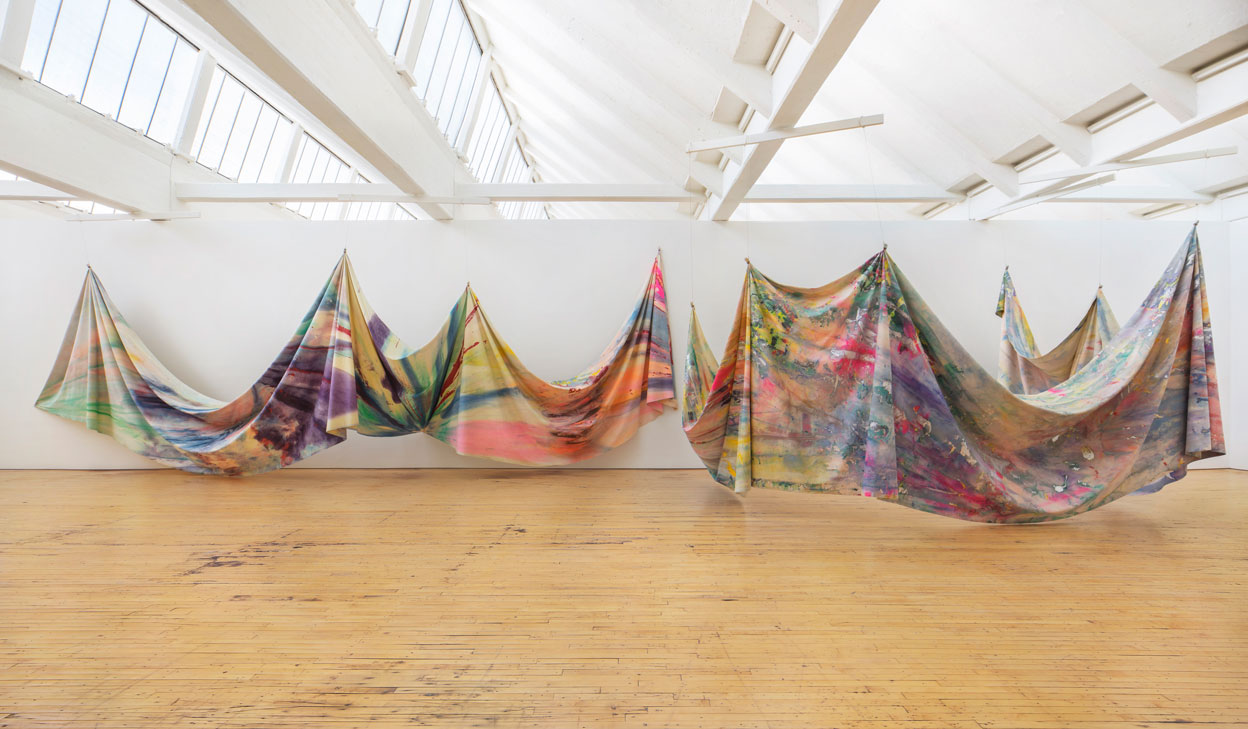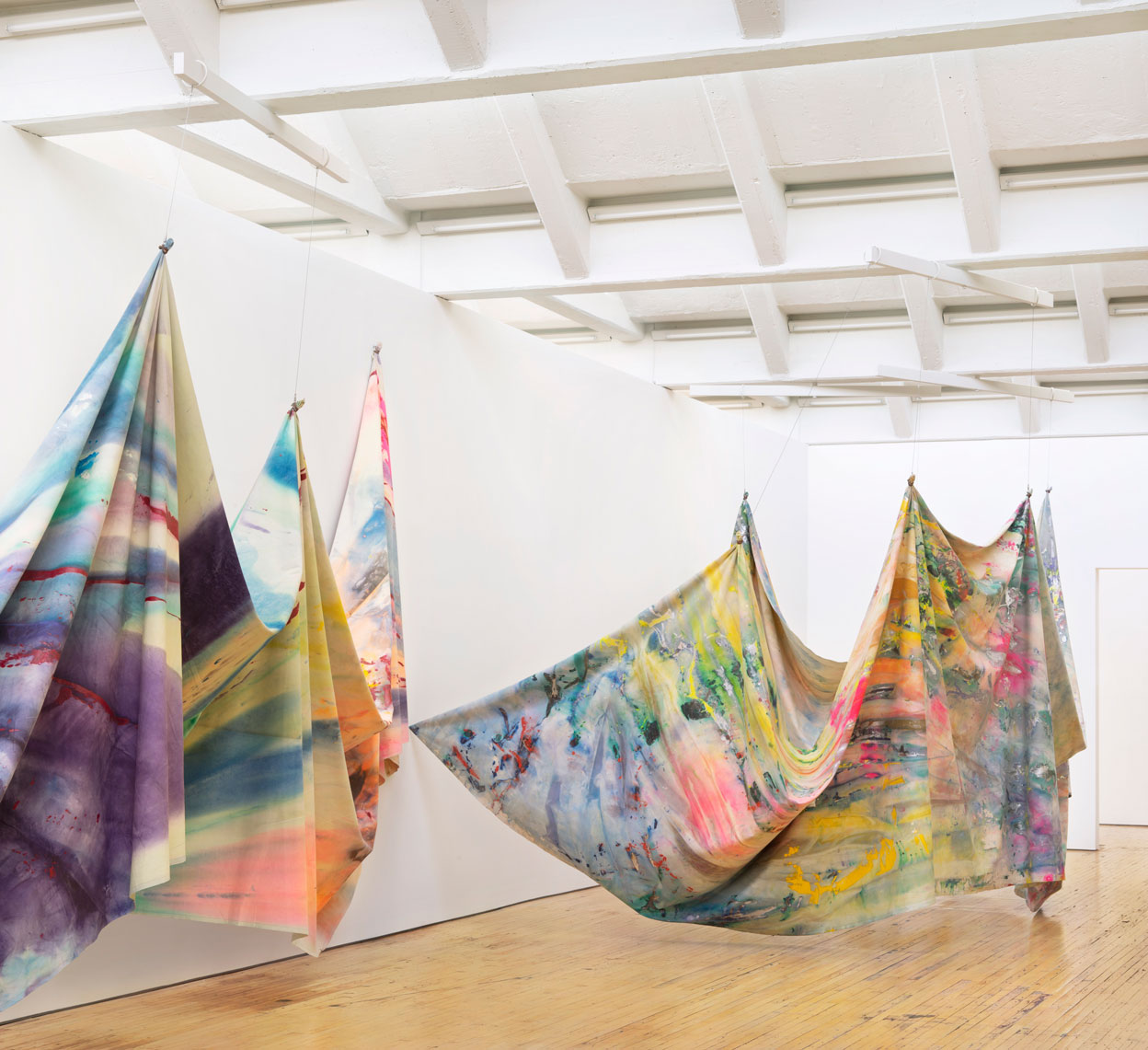ART-PRESENTATION:Sam Gilliam
 Sam Gilliam is associated with the Washington Color School, a group of Washington, D.C. area artists that developed a form of abstract art from color field painting in the 1950s and 1960s. His works have also been described as belonging to abstract expressionism and lyrical abstraction. He works on stretched, draped and wrapped canvas, and adds sculptural 3D elements. He is recognized as the first artist to introduce the idea of a draped, painted canvas hanging without stretcher bars around 1965. This was a major contribution to the Color Field School.
Sam Gilliam is associated with the Washington Color School, a group of Washington, D.C. area artists that developed a form of abstract art from color field painting in the 1950s and 1960s. His works have also been described as belonging to abstract expressionism and lyrical abstraction. He works on stretched, draped and wrapped canvas, and adds sculptural 3D elements. He is recognized as the first artist to introduce the idea of a draped, painted canvas hanging without stretcher bars around 1965. This was a major contribution to the Color Field School.
By Dimitris Lempesis
Photo: Dia Art Foundation Archive
An exhibition of Sam Gilliam’s early work from the 1960s and 1970s is on presentation at Dia Beacon. The display brings together a large-scale canvas installation, featuring two “Drape” paintings suspended in concert with one another from the ceiling, and a painting from his “Beveled-Edge” series. Installed alongside Dia’s permanent collection, this presentation situates Gilliam’s practice in dialogue with that of his Minimal and Postminimal peers, such as Robert Ryman and Anne Truitt. Each of these artists considered painting in an expanded form and created near-sculptural objects. Sam Gilliam’s “Beveled-Edge” paintings and “Drape” works from the 1960s and 1970s represent a radical approach to the medium of painting. Architectural in scale, these works chart a crucial moment in Gilliam’s early practice as he explored the possibilities of manipulating canvas in three-dimensional space. One of the most important figures in American abstract art, Gilliam emerged from the Washington, DC, cultural scene in the 1960s alongside Truitt. Setting himself apart stylistically from Washington Color School painters such as Morris Louis and Kenneth Nolnd, Gilliam experimented with vibrantly hued and suspended canvases that follow a more spontaneous and uninhibited approach to coloration and form. With the pioneering “Drape” paintings, he shifted his canvases from the frame and wall to three-dimensional space, imparting a sculptural element to the installations and allowing them to become site-responsive. Unique to each space, the soft folds of canvas may not be draped the same way twice. Two of Gilliam’s “Drapes”, both titled “Carousel II” and made in 1969, which are united to fill a 325-square-meter gallery. This immersive, site-specific installation, titled “Double Carousel Merge” (2019), recalls the artist’s room-sized, situational works of the late 1960s and early 1970s, in which unstretched painted canvases were arranged to encompass the volume of an existing space. Composed on-site, the installation responds to the industrial scale of Dia:Beacon’s high ceilings and large entryways, with drapes hanging from ceiling beams andhovering above the floor. Visitors will be able to move around the suspended material as they walk from one end of the gallery to another. “Spread” (1973), a large-scale painting from the “Beveled-Edge” series, is also on view. Long considered one of the most groundbreaking aspects of his practice, the artist began producing “Beveled-Edge” paintings in 1967. While working on this series, Gilliam added a water-tension breaker to his paint to create translucency once the paint was applied to the canvas.Pouring acrylic paint onto swathes of canvas, he would then fold the canvas while the paint was still wet, creating unpredictable spatial and color effects. Once dry, Gilliam wrapped the painted canvas around beveled-edge stretchers, which transformed the formerly two-dimensional painting into a relief that was either angled away from or toward the wall. “Spread” is exemplary of this period of art making that marks Gilliam’s departure from the Washington Color School, and his challenge to the traditional two-dimensional concept of the medium.
Info: Dia Beacon, 3 Beekman Street, Beacon, New York, Duration: 10/8/19- , Days & Hours: Thu-Mon 11:00-18:00, www.diaart.org


